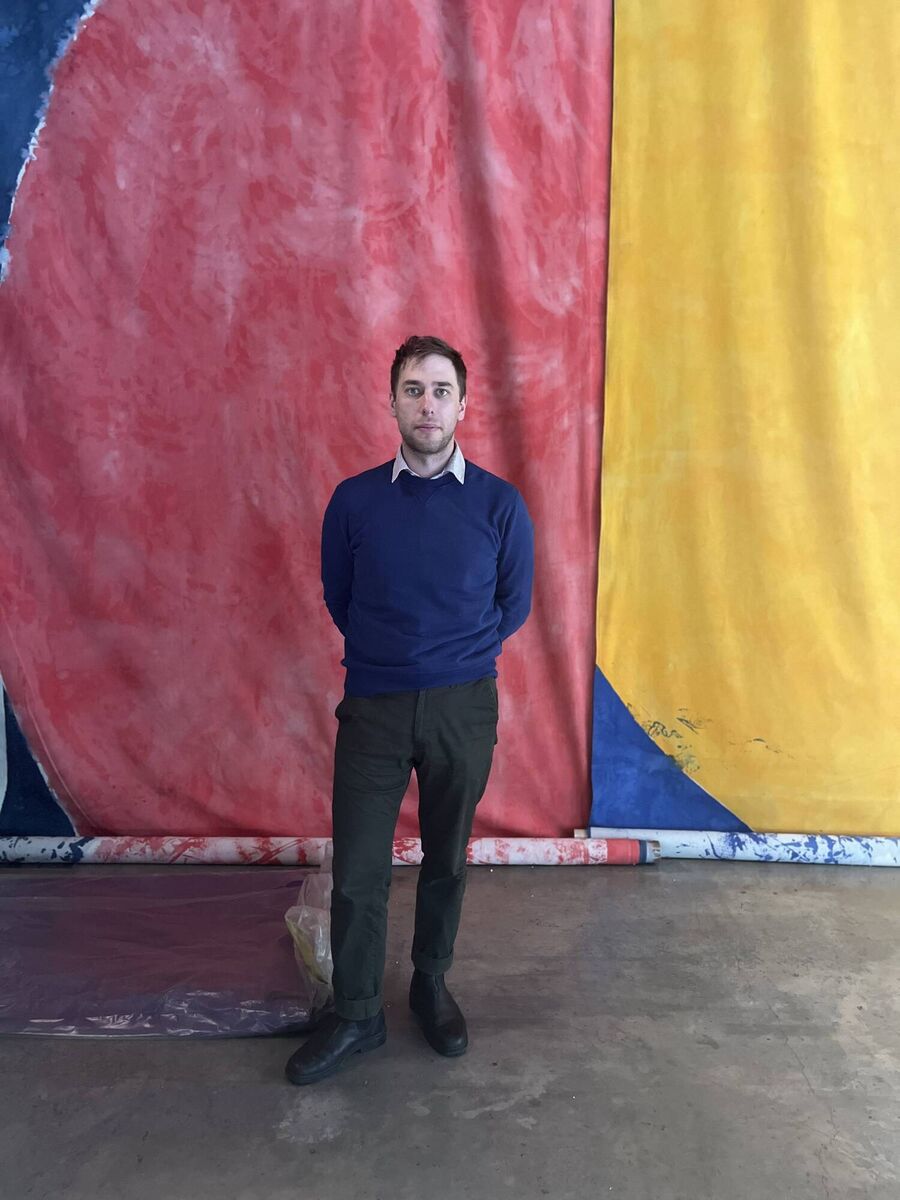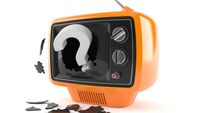Kilkenny collective flies the flag for inclusivity at RHA exhibition

Brianna Hurley, The Happy Crying Waterfall.
If the Kilkenny Collective for Arts Talent (KCAT) studio group is known for anything, it is their brilliant use of colour. This is greatly in evidence at The Known and Unknown World, a new exhibition of KCAT artists running at the Royal Hibernian Academy in Dublin until October 26.
The Known and Unknown World is curated by Benjamin Stafford, visual arts curator at VISUAL Carlow, and originally ran at the KCAT Arts Centre and the Powerhouse in Callan, County Kilkenny as part of Kilkenny Arts Festival in August.
KCAT is affiliated with Camphill Communities of Ireland, and was established in 1999 to provide an inclusive environment for artists with or without intellectual disabilities.
“After 25 years we felt it was time to put together an exhibition of every KCAT artist, past and present. As far as I’m aware, it’s one of the biggest exhibitions KCAT has done. There’s about 50 pieces from 22 artists. It includes people like Sinéad Fahey and Eileen Mulrooney and Margaret Walker, who were involved from the start and are still actively part of the studio. But it also features people like George McCutcheon, who was very foundational in setting up the studio, but is no longer involved. Some of the earlier artists have passed away, while others have retired or no longer engage in daily studio work,” says Stafford.
The Known and Unknown World is accompanied by a catalogue, KCAT Studio 25 Years. “It features a range of texts that highlight the importance of KCAT as an institution,” says Stafford, “and the ongoing importance of providing opportunities and equity to artists with disabilities to be considered the equals of their non-disabled peers. It also includes a profile of all the artists who are currently members of the studio, or who have been in the past. The catalogue is a primer, I suppose, for anyone who wants to know more about KCAT’s exhibition and studio practices. KCAT has a really good tradition of publishing. As part of the support they offer, each artist sooner or later has a monographic text published on their practice”.

Stafford took the idea of the Wunderkammer as the starting point for his work on the exhibition. “Wunderkammers started largely in Europe in the 16th century,” he says. “They were the precursors to public museums, and were essentially vehicles for individuals to showcase their collections of objects, almost as an educational tool to try make sense of the world by sorting things into categories. Usually it was artworks and the achievements of mankind juxta-posed or combined with the natural world and the natural sciences. They were visually striking in that all these things were mixed up together in a very different way to how we’d be used to seeing things in a contemporary gallery.”
“That’s largely been the inspiration for how this show was put together. The artists aren’t divided into their own sections, but rather their work is brought together through disparate themes that draw a connection — sometimes obvious, and sometimes a bit more subtle — between them. It’s mostly painting in the show, but there’s a small selection of sculpture and ceramic work as well.”
One of Stafford’s pairings is that of paintings by Brianna Hurley and Jason Turner. “Brianna’s work is from a series she has done about the planet Castalia, which is a kind of uncharted foreign world she finds herself landing in as a protagonist, where she has interactions with the local population, who she describes as Amazons. They live in this bucolic landscape, and their cities and built environment are inspired by Brianna’s travels in Europe, specifically in Spain. Also, they can fly.
“In the background is a planet that could be Earth or an Earth-like planet, and that was why I chose to pair it with a painting by Jason Turner. Jason has a lot of works in the show, but this one is based on a photograph of the Earth taken from the moon. Side by side, the two combine very factual historic imagery with speculative science fiction.”

Another pairing features work by Margaret Walker and Thomas Barron: “Margaret’s painting is titled Margaret’s Holiday Home, and it features little figures, animals and cars. But what’s notable is that we’re looking down at the landscape, and there’s this patchwork grid of fields. I’ve paired that with this totally abstract piece by Thomas Barron. I was just struck by the similarities between them in terms of geometry and palette and their treatment of two totally different subjects.”
Stafford’s involvement in the exhibition came about through his work at VISUAL Carlow. “Callan is not that far away,” he says. “I’ve been aware of KCAT for a long time, and I have a longstanding personal interest in art made by people with disabilities. We did a solo exhibition with Margaret Walker at VISUAL in 2022, and then Brianna Hurley had a big display of her work as part of a group show called
Remembering the Future in 2023.
“Alongside that, I’m a member of KCAT’s Curator Network, a body that brings together an advisory panel of working curators, mostly affiliated with other institutions in the country. They basically advocate for KCAT and try to find suitable opportunities for the artists. They work in a kind of an advisory capacity on some of the programming and work they do.”
After 25 years, it seems that KCAT has largely succeeded in its aim of establishing disabled artists on an equal professional footing as those without disabilities says Stafford: “That has been achieved in the sense that I think their work has been recognised on its own merit.”.
“We did an open conversation at the opening of the exhibition in Callan in August, and Andrew Pike, one of the very early members of KCAT, said, I don’t want to be considered as an artist with a disability, I just want to be considered an artist.
“I think that has always been the goal, for the work to be taken on its own merit. But of course, for that to happen, it requires institutions and other arts professionals going the extra yard in terms of seeking out this work and understanding it and getting to grips with it. After this outing at the RHA, the exhibition will travel to the Esker Arts Centre in Tullamore. It should open there in early 2026. It’s another good opportunity for the KCAT artists to attract a broader audience.”
-
KCAT: The Known and the Unknown World runs at the RHA, Dublin until
October 26 - Further information: rha.ie, kcat.ie

Subscribe to access all of the Irish Examiner.
Try unlimited access from only €1.50 a week
Already a subscriber? Sign in



